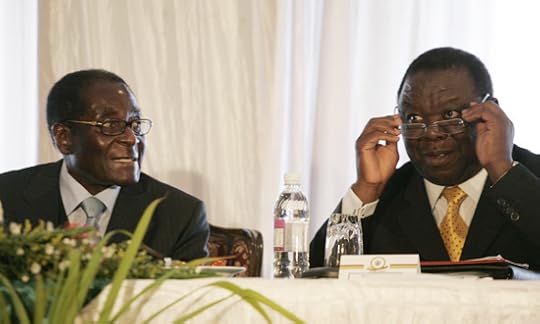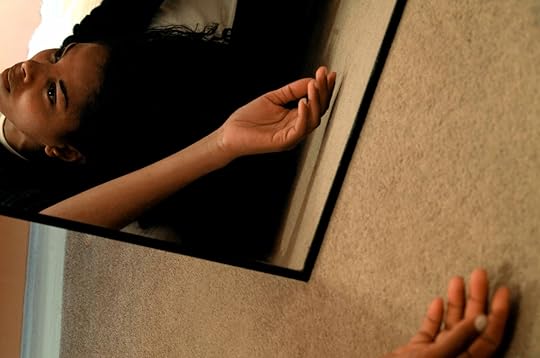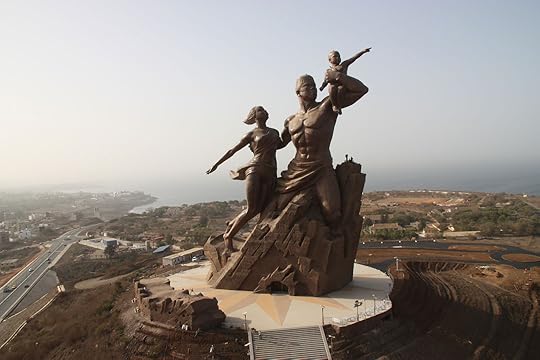Sean Jacobs's Blog, page 668
March 15, 2011
Hip-hop's Language Problem
Rob Boffard writing in The Guardian:
Hip-hop in South Africa faces the same problems all music faces – how do you reach as wide an audience as possible? But it has additional posers unique to this country – can you rap in any of South Africa's 11 languages and still be relevant to all your listeners? And how much can you rely on American hip-hop before losing your own identity? But this is a genre bursting with talent, and South African rap artists are finding ways around the difficulties their situation throws at them … Corporate interest helped South African hip-hop beat one of its biggest problems. Globally, few genres have taken to the internet like hip-hop, and it's now a vital tool for any artist. But in South Africa? Not a chance. Of the country's 49m people, only around 6m have access to the web. And in the predominantly black townships, which represent hip-hop's core market, internet access is almost unheard of. When it comes to publicising and distributing music, there's rarely a workable online option.
Is that so?








No One Will Remember The Cover

I received my copy of this year's Commonwealth Prize winner Aminatta Forna's The Memory of Love in the mail the other day. Not that I don't like the cover (or the book), but this is just silly.
And here's why:

Some of us (in Canada, Great Britain, South Africa and India) also know 2008 Commonwealth Prize winner Lawrence Hill's novel as The Book of Negroes and sure, this is the Australian edition's cover, but still…
– Tom Devriendt








5 Things: Glenna Gordon
I am shooting these on my iPhone. They're short, no-frills interviews done in my office. The format is simple: The subjects sit on a chair in my office while I point the iphone at them. They decide what 5 things they want to talk to about. The first guest is Glenna Gordon, photographer and blogger based in Liberia. She happen to pass through New York City. Glenna decided to talk about her 5 favorite photographers.
Some other notes: I want to make this a regular thing. I did not want to add any props, so the video is accompanied by a list of references at the end of this post; the stuff mentioned by Glenna. I try to make as little edits as possible. It was my first attempt. I messed up the color at the end, but I'll get this right over time. You may also get sea sick from the wobbly camera work (if you can call my holding a phone camera that). Glenna, who is an established photographer, was a true professional and played along. Next up is Wills Glasspiegel.
References:
Malick Sidibe; PANOS Agency; Andrew McConnell; Robert Hammond; Kieran Dodds; Tim Hetherington; Krisanne Johnson; and Lynsey Adario








"You no longer need your calculators to go for lunch in Harare"
As 42 opposition activists were facing treason charges in Zimbabwe for watching video footage of the Egyptian democracy protests, the Financial Times sent Alec Russell, its comment and analysis editor, down to Harare to interview Morgan Tsvangirai, Zimbabwe's Prime Minister. Tsvangirai's opposition Movement for Democratic Change is serving together in a Government of National Unity with Life President Robert Mugabe's ZANU-PF since 2009. This arrangement is all tenuous of course. ZANU-PF thugs and the police continue to harass opposition supporters and some Tsvangirai's supporters want him to leave the government since ZANU-PF ministers occupy key all Cabinet key portfolios at the expense of the MDC. The piece was for the FT Weekend's feature "Lunch with the FT." Until recently Russell was as the FT's correspondent in Johannesburg. The piece is vintage Russell: He uses the term he invented for African leaders:"Big Man;" gets his facts from the Cato Institute, and sundowners is "that ritual of the African safari: the serving of drinks at the close of the day."
But we do learn a few things:
"You no longer need your calculators to go for lunch in Harare."
If you were to enter [Cabinet meetings] you would not know who was who, MDC or Zanu-PF. The seating is Zanu-PF, MDC, Zanu-PF, MDC … and he [Mugabe] and I direct. We really do consult when things get out of hand."
"I used to think [Mugabe] is callous and all that," he says. "But you know what? He's human after all. He's very humane. There is a split personality between Mugabe the [revolutionary] hero and Mugabe the villain … If you confront him, he tends to close his mind and to say 'I'm not guilty of violence. I'm not guilty of this. I'm not guilty … "








March 14, 2011
'Moore Street'
"Moore Street" is a single tracking shot filmed on Dublin's famous Moore Street with members of the Dublin-based African production company, Arambe. In the film, which is a continuation of Molloy and Lawlor's fascination with changing urban terrains, we follow the thoughts of a young African woman in Ireland as she considers her future, and her unfolding sense of identity as she walks along the city street at night.
Moore Street is an iconic street in Dublin, a market area migrant communities have historically made as their first point of arrival and settlement. The film documents the street at an interval in its official re-development, where already the everyday hopes and dreams of new communities are reshaping the city as home.
This film was chosen to represent Ireland in the 2005 Sao Paulo Biennale.
'Moore Street' is part of [directors] Joe Lawlor and Christine Molloy's series of groundbreaking community engagement film projects, CIVIC LIFE. To see Joe talk about his and Christine's process, go [here].
Via Sight & Sound.








Viva Amilcar Cabral
Amilcar Cabral, the key figure in Guinea-Bissau and Cape Verdea's independence (and who had an impact beyond its borders; see Chris Marker's 'San Soliel,' through historian Basil Davidson's work and in Syracuse), was born in September 1924 and was assassinated in October 1973. So there is no obvious reason to post this music video. But we'll do anyway. It is for the 2009 song "Viva Amilcar Cabral" by Paris-based rap group MC Malcriado. (They're a group of MC's with Cape Verdean roots.) Cabral was assassinated by Portuguese agents months before Guinea-Bissau declared independence from Portuguese colonial rule. Read the subtitles. It's good history lesson for the youngsters. They also drop some zouk at the end.








'Tales from the Sahel'
This coming Friday Maal and British playwright Kwame Kwei-Armah will tour the UK for their event, "Tales of the Sahel." Maal and Kwei-Armah "… will spend the six performances talking, the conversation interspersed with songs from Maal and his two accompanying musicians."
Preview in The Financial Times








African women's visual narratives
If you're in London, "Reflections on the Self ," an exhibition of "African women's visual narratives, as told through self-portraits and portraits of other women," will be at the Royal Festival Hall till April 4th. It features the work of photographers Hélène Amouzou (Togo; lives and works Belgium); Majida Khattari(Morocco; lives and works France); Zanele Muholi (South Africa); Senayt Samuel(Eritrea, lives and works in the UK; image above); and Nontsikelelo Veleko (South Africa).The curator is Christine Eyene (references: Gwanza, Month of Photography 2011 in Zimbabwe as well as African section of Photoquai 2011 at the Musée du Quai Branly in Paris, France).
Via Christine Eyene








Subsidizing North Korea
ArtAsiaPacific has a feature essay on North Korea's Mansudae Art Studio, which operates under the 'special guidance' of the country's leader, Kim Jong-Il, and produces propaganda art–paintings, public sculptures–for the North Korean state. The studio also has international clients and a ready market in China, South Korea and Japan. But, notes writer Angie Baeckner, the most startling growth for the studio has been in Africa on projects like the one above, "The African Renaissance Monument," a 164-feet tall bronze statue in the Senegalese capital, Dakar, to mark the 50th anniversary of Senegal's independence from French colonial rule. The statue is "… taller than both the Statue of Liberty and Christ the Redeemer in Rio de Janeiro" and cost about $28 million–money Senegalese say the state does not have. But they have also built and designed statues in Botswana, Namibia, Angola, Algeria, Benin, Chad, the DRC, Egypt, Togo and Zimbabwe. Locals complain the work resemble the "… standard busts and statues of some European generals" and "Socialist Realism, a style that has nothing to do with any indigenous African culture."
H/T: Public Archive.








Sahara Reporters
Last December I met the impressive Omoyele Sowore, founder of Nigerian online news site, Sahara Reporters. I was chairing an independent media panel in Brooklyn ahead of the World Social Forum in Dakar. Sowore was one of the panelists. Based in New York City, Sahara Reporters have broken a number of big stories, including events around the country's former president Umaru Yar'Adua's sudden passing in 2009. This profile by Al Jazeera English's media criticsm program, "Listening Post," does a fair job of what Sahara Reporters represents, including its faults, including the occasional inaccurate and misleading report.








Sean Jacobs's Blog
- Sean Jacobs's profile
- 4 followers







